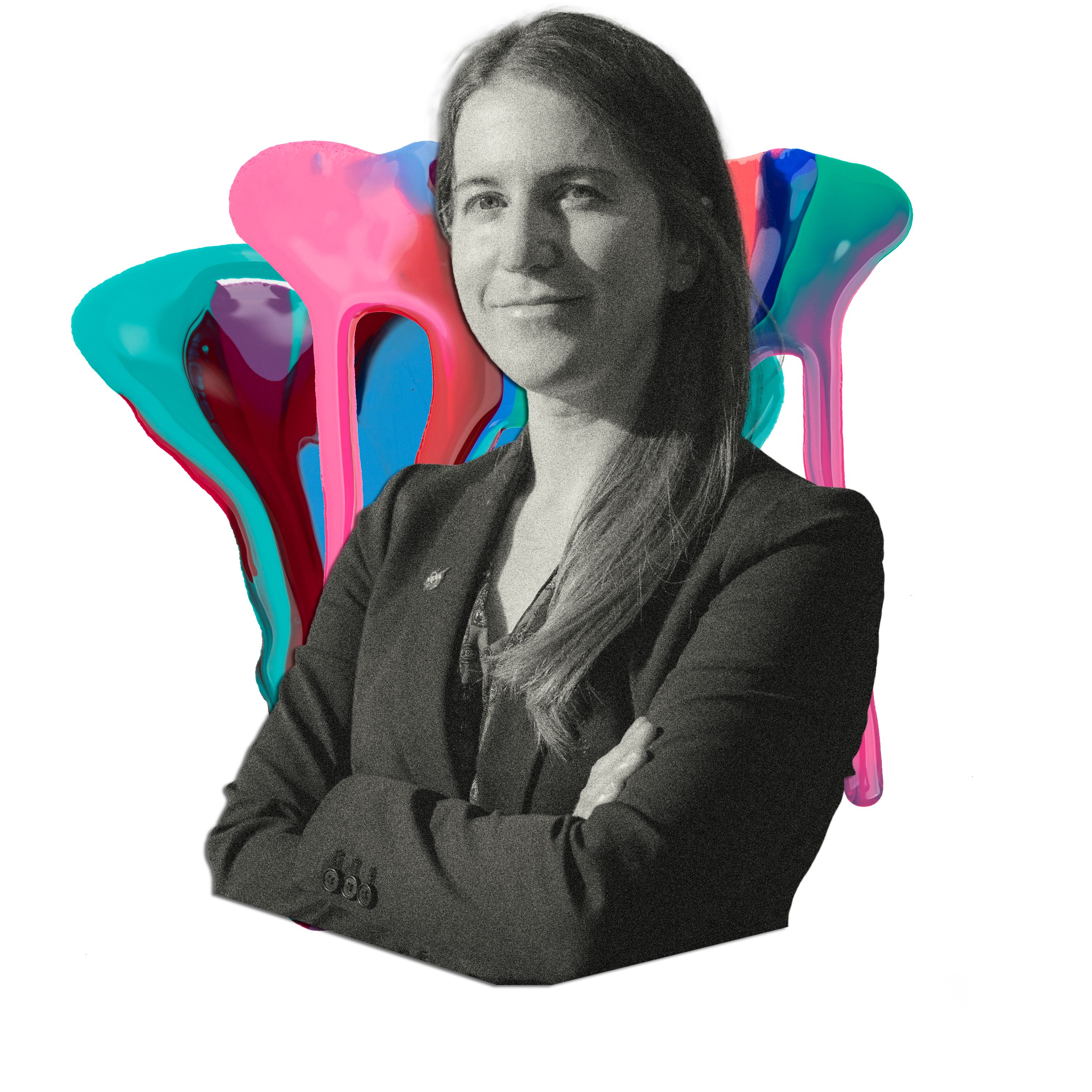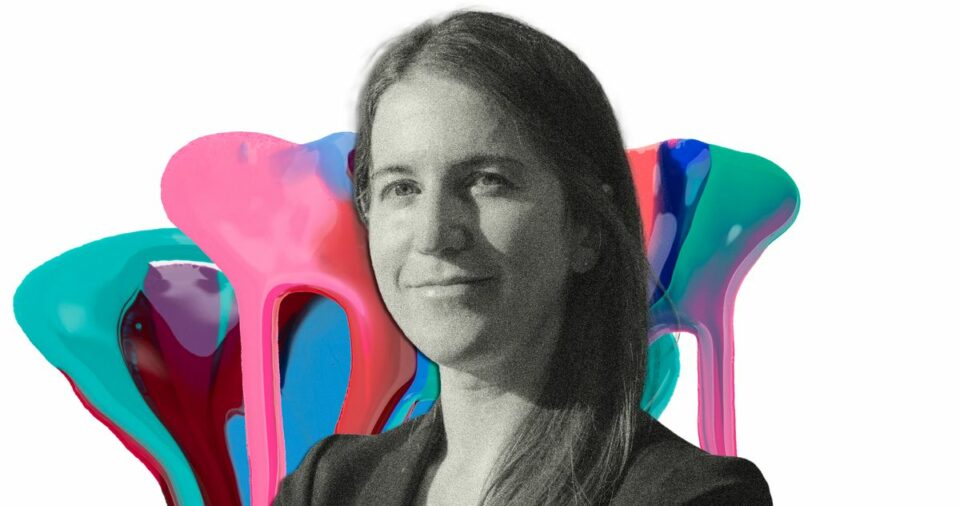
Dr. Kate Calvin always imagined NASA to be the type of place where people get together to solve big problems. “It seemed so cool to me” as a kid, she says. “Now that I’m a part of it,” she realizes, “it’s even better.” She got her Ph.D. from Stanford University and was an earth scientist at the Joint Global Change Research Institute, where she examined interactions between land, energy, water, and climate before landing at NASA as chief scientist and senior climate adviser. Now, she’s tackling challenges such as mitigating climate change, returning astronauts to the moon, and searching for signs of life far from Earth.
Calvin also serves as co-chair of Working Group III of the United Nations Intergovernmental Panel on Climate Change, a group of hundreds of scientists from around the world that reviews the latest research and communicates to the rest of us just how bleak the forecast for Earth is looking. As part of that, she helps produce the IPCC’s blockbuster reports that detail what’s causing the climate crisis, the coming dangers, and what can be done to head off the damage. “It’s easy to feel overwhelmed,” Calvin says of the climate crisis, but “someone once told me that science is hope, and I’m really focused on that.”
While she has co-authored more than 150 papers as a scientist, Calvin credits her time at NASA with making her a better science communicator. She hopes that by explaining science she can help people better understand and navigate the world. “Things like the James Webb Space Telescope show us the beauty of our universe. Rovers on Mars show us what humans can do when we put our minds to it,” she says. “So we’re able to not just answer questions but also inspire the next generation of scientists.” Calvin lives in Washington, D.C.; here’s how she gets it done.
On how she got to NASA:
I’m not someone who knew as a kid what I wanted to be when I grew up. I liked being outside; I did a lot of hiking. I also really liked math. When I went away to college, I was a math and computer-science major, but I still didn’t really know what I wanted to do. So I went to grad school and started researching climate change. Climate change was a way of taking my technical skills and applying them to something I really care about: our planet. A few years ago, when I got the opportunity to come to NASA and work on climate and science more generally, that brought all of those pieces together.
On her morning routine:
I’m a morning person, and that’s when I’m most productive. I start working pretty soon after getting up. I always skim my email first thing, just to see if there’s anything unexpected that might impact my day. I also always have coffee, and I’m one of those people who don’t drink their coffee the same way every day. If there’s time, I like reading the news while I have my coffee and try to read a wide variety of news sources.
On what her workday is like:
Every day is different, and I do a mix of activities depending on what’s going on. I often spend time talking to NASA scientists about their work and talking to people outside of NASA about what we’re doing. I speak with NASA leadership and make sure they have the latest information. I also get to do things like attend launches, which are a real showcase of teamwork. You see the launch before you can hear or feel it. There’s a physics lesson in watching one.
On good advice:
One of the best pieces of advice I’ve gotten was from a professor in grad school. He said to just take the best opportunity when it comes. You don’t need to know where you’re going in the long term, and you don’t have to plan very far in advance. You just need to look at what your options are and follow life where it leads. You’ll go where you go.
On an undervalued leadership skill:
It’s important to acknowledge your teammates and their role in making things happen. When a member of my team makes a contribution, no matter how big or how small, I want to make sure they’re recognized. It also shouldn’t just be me who knows about their successes. When I’m talking to other people in leadership, I make sure they know who on my team contributed. I’m a big believer in always thanking people. Even if someone is just doing their job, people should feel valued for what they are doing.
On the people who help her get it done:
NASA is all about teams, and I have a fantastic support system within the agency. There’s a great team in my office, and they help keep me organized and up to date on scientific research. I interact with the scientists and engineers on each mission, particularly when they get close to launch or have the first data come back. I get their insight on that science, which really helps me prepare to communicate it more broadly. We also have a wonderful communications team that makes sure I’m ready for every external engagement and can help people relate to our information in a meaningful way.
I also have a great set of friends and family I rely on pretty heavily. I have a bunch of female friends who work on climate and the environment and live in the D.C. area. It’s great to share stories with them after a long day.
On the ritual that grounds her:
I make sure I get outside every day. At different points in my life, that has meant running or biking. Even if the weather isn’t great, I’ll go for these long, meandering walks through D.C. It helps clear my mind and gives me a chance to see the world around me and appreciate the planet we live on.
On unwinding:
I’m a big believer in work-life balance and separating work from nonwork. As I mentioned, I go for walks — that’s one way I separate. I don’t check email at all after 8 p.m. Then I often like to listen to music, read, or watch TV to help unwind. There are two shows I’ve been watching lately. One is Top Chef, and I’ve also started watching reruns of Ugly Betty. I saw the Barbie movie not too long ago and started looking for other things America Ferrera has done, which took me back to Ugly Betty.
On staying motivated to combat climate change:
It’s easy to feel overwhelmed. You see it in the news, and you experience it where you live. Last year was the hottest on record, and we saw wildfire smoke in places we hadn’t before. We saw floods, droughts, and heat waves. It’s understandable that it can be a lot for people to read about, see, and live through.
Someone once told me that science is hope, and I’m really focused on that. There are a lot of scientists at NASA and around the world who are researching climate. We understand our planet better than we have before and continue to learn about it every day. So I focus on the hope that science brings and the people who do that science and use it.
On her future ambitions:
Fifteen years ago, I was really focused on doing research. I would present my research to other scientists, but I didn’t really talk to the media or the public. Over time, I’ve realized how important it is that we communicate science broadly. That has become a large part of my job, and I’m focused on making science accessible. Science can be really intimidating, and I want to break down these barriers and make sure people feel comfortable asking questions. If we can help people understand the world around them, we can help people prepare for the future.
By Sarah Sloat , 2024-04-08 13:00:32
Source link

